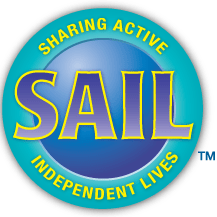By SAIL Council Member Alan Lukazewski
 High blood pressure, or hypertension (HTN) has been known for decades to be a leading cause of strokes and heart attacks. As a nationwide public health problem, persistent efforts were made to study HTN and how to best lower blood pressure (BP) with the belief that lower BP would lead to fewer heart attacks and strokes. What is known about treating HTN is that it does lead to lower rates of heart attacks and strokes, but also other forms of cardiovascular disease, such as heart failure, kidney disease, eye-disease. This is especially relevant to people with diabetes.
High blood pressure, or hypertension (HTN) has been known for decades to be a leading cause of strokes and heart attacks. As a nationwide public health problem, persistent efforts were made to study HTN and how to best lower blood pressure (BP) with the belief that lower BP would lead to fewer heart attacks and strokes. What is known about treating HTN is that it does lead to lower rates of heart attacks and strokes, but also other forms of cardiovascular disease, such as heart failure, kidney disease, eye-disease. This is especially relevant to people with diabetes.
I remember a story from a long since retired physician at the University of Chicago, who back in the 1950’s, was treating HTN. He spoke of people with BPs “as high as 200/120”, and “they were dropping like flies” from heart attacks and strokes. He also said, “We didn’t have medications back then like we do today. All we could do was lower salt intake and encourage weight loss”. Since the development of an array of different medications, we’ve proven that we can greatly reduce the incidence of cardiovascular events on a large scale by screening for HTN and treating to appropriate targets. It is one of the most profound public health successes of the last 100 years! But what is not fully appreciated is that older adults, people ages over 65 whose BP is 140/90 or more, may stand to benefit even more than younger adults if their BP is lowered to a safe target. In fact, for every 20mmHg higher systolic BP (the higher number) and 10mmHg higher for diastolic BP (the lower number) over 115/75, the risk of death from heart disease or stroke doubles. If 67 people were to successfully treat their systolic HTN, one person would avoid a stroke. But in those with higher systolic BP, fewer people need to be treated to benefit by preventing a stroke, one reference states 7-10 people with very high systolic BP, if treated, prevents one stroke.
Treatment Options

Lifestyle changes are always a part of BP control, such as reduced salt intake, weight loss and exercise. SBP can be lowered 1/2-2mmHg for every 2lb weight loss. Reducing salt intake can lower SBP almost 5mmHg. And exercise another 4-6mmHg, and these are additive. But many people cannot make these changes, although I encourage you to make the changes you can, to preserve your health and function late in life, but also keep in mind that medications are usually needed to lower BP to a reasonable target.
The medications used to treat BP are too numerous to discuss in this article. But what’s important are two things. First, working with your physician to assess your risk and determining an appropriate treatment plan is critical, which includes medications and adhering to taking them routinely. Second, working with your physician to make sure you do not experience the adverse effects of your medications by lowering your BP too far. (BP below 130/80 may be associated with higher risk of harm, although BP targets should be individualized.) BP medications can increase your risk for a fall by lowering BP too far, so understanding what is a reasonable BP to target and understanding symptoms such as dizziness, lightheadedness as being signs that it may be time to make adjustments are both important. It also pays off to monitor your BP at home. This method can add valuable information as to your BP trend and actual control over time. BP checks at the doctor’s office are not always sufficient to monitor HTN.
In summary, HTN is a very real problem, and more so for older adults. So, don’t believe it’s too late to treat HTN! Those in their 70’s and 80’s stand to benefit greatly. And I assure you, treating HTN is in your best interests, but let’s work together to make sure we do so safely.
Finally, remember that an annual comprehensive medication review is included in the SAIL Full Member benefits. (Additional reviews are provided at an additional cost.) In addition, as a member of SAIL, you can receive 10% discounts to classes offered by the Madison Schools and Community Recreation (MSCR) program and access to the Attic Angel Association and Oakwood Village wellness programs at reduced rates. Contact the SAIL office at 230-4321 for more information.
